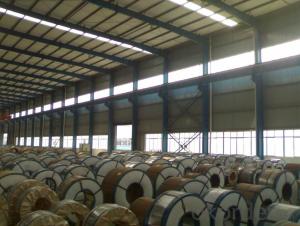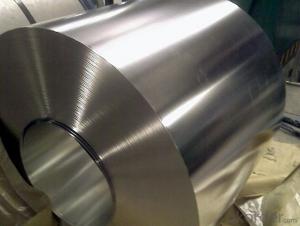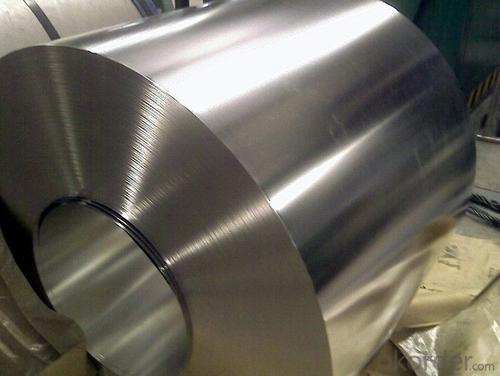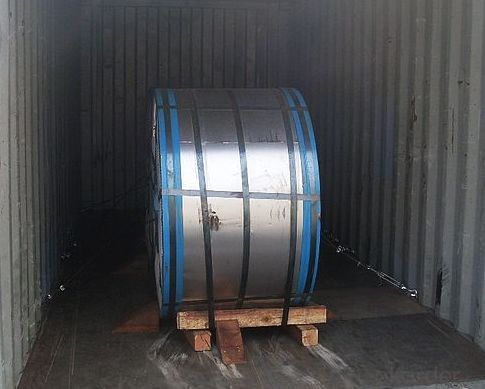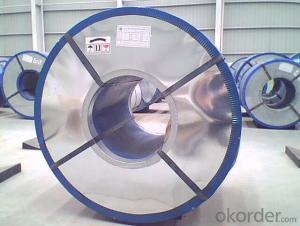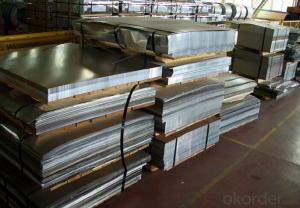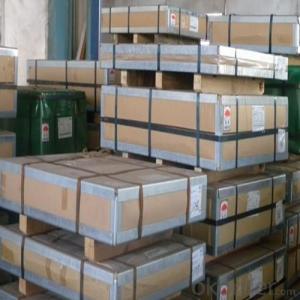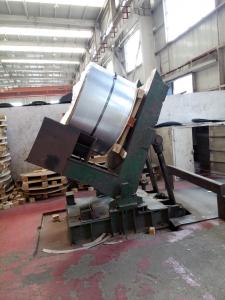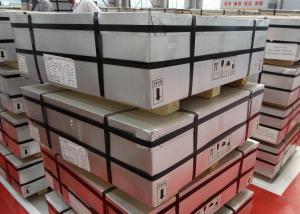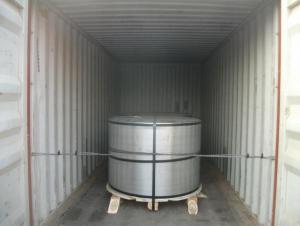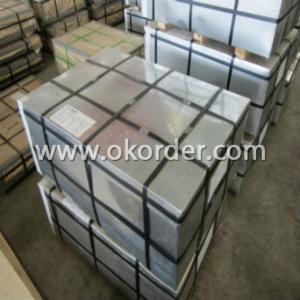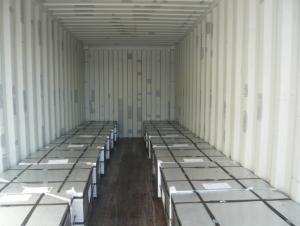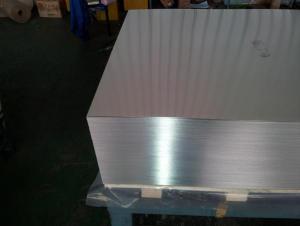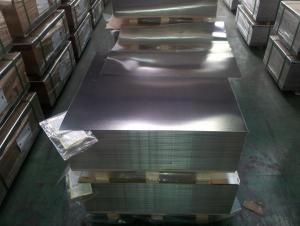Electrolytic Tinplate Coil for Tin Cans Making
- Loading Port:
- Tianjin
- Payment Terms:
- TT OR LC
- Min Order Qty:
- 25 m.t
- Supply Capability:
- 7000 m.t/month
OKorder Service Pledge
OKorder Financial Service
You Might Also Like
1.Structure of Electrolytic Tinplate Coil for Tin Cans Making Description
Electrolytic Tin Plate Coils and Sheets for Foods Metal Packaging, is one thin steel sheet with a coating of tin applied by electrolytic deposition. Tinplate made by this process is essentially a sandwich in which the central core is strip steel. This core is cleaned in a pickling solution and then fed through tanks containing electrolyte, where tin is deposited on both sides. As the strip passes between high-frequency electric induction coils, it is heated so that the tin coating melts and flows to form a lustrous coat.
2.Main Features of Electrolytic Tinplate Coil for Tin Cans Making
Appearance – Electrolytic Tin Plate is characterized by its beautiful metallic luster. Products with various kinds of surface roughness are produced by selecting the surface finish of the substrate steel sheet.
Paintability and printability – Electrolytic Tin Plates have excellent paintability and printability. Printing is beautifully finished using various lacquers and inks.
Formability and strength – Electrolytic Tin Plates have got very good formability and strength. By selecting a proper temper grade, appropriate formability is obtained for different applications as well as the required strength after forming.
Corrosion resistance – Tinplate has got good corrosion resistance. By selecting a proper coating weight, appropriate corrosion resistance is obtained against container contents. Coated items should meet 24 hour 5 % salt spray requirement.
Solderability and weldability – Electrolytic Tin Plates can be joined both by soldering or welding. These properties of tinplate are used for making various types of cans.
Hygienic – Tin coating provides good and non toxic barrier properties to protect food products from impurities, bacteria, moisture, light and odours.
Safe – Tinplate being low weight and high strength makes food cans easy to ship and transport.
Eco friendly – Tinplate offers 100 % recyclability.
Tin is not good for low temperature applications since it changes structure and loses adhesion when exposed to temperatures below – 40 deg C.
3.Electrolytic Tinplate Coil for Tin Cans Making Images
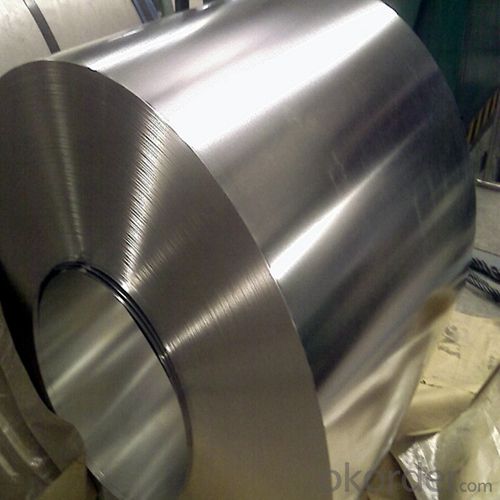
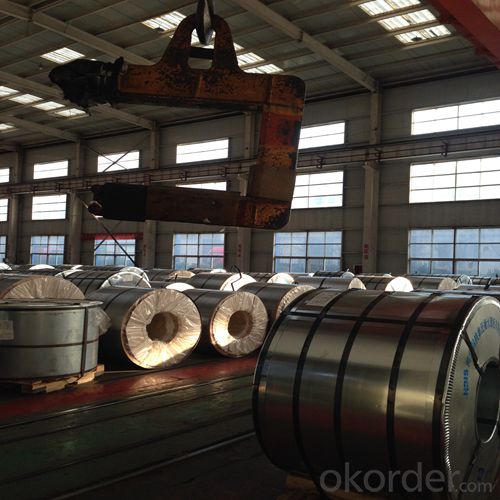
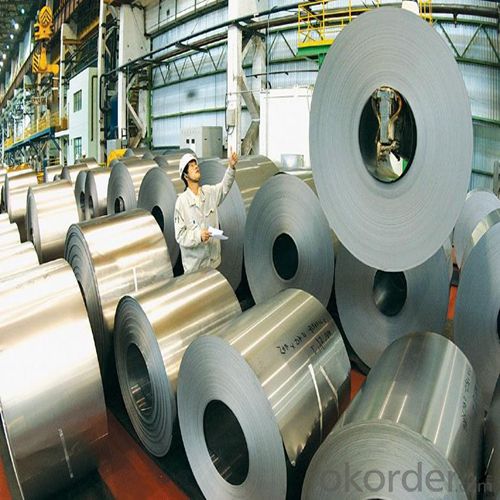
4.Electrolytic Tinplate Coil for Tin Cans Making Specification
Standard | ISO 11949 -1995, GB/T2520-2000,JIS G3303,ASTM A623, BS EN 10202
|
Material | MR,SPCC |
Thickness | 0.15mm - 0.50mm |
Width | 600mm -1150mm |
Temper | T1-T5 |
Annealing | BA & CA |
Coil Inner Diameter | 508mm |
Weight | 6-10 tons/coil 1~1.7 tons/sheets bundle |
Passivation | 311 |
Oil | DOS |
Surface | Finish,bright,stone,matte,silver |
5.FAQ of Electrolytic Tinplate Coil for Tin Cans Making
- How are the Electrolytic Tin Plates specified?
The Electrolytic Tin Plates are specified as per the steel base, extent of tempering, the coating weight, annealing method and the surface finish.
- How many types there are for base steels?
The base steels are of three types: Type MR, L, D
Tinplate is widely used for the packaging of products. Such as food cans,
beverage cans, pet cans, closures, general line cans and so on.
Printed Tinplate is offered!!
- Q: Can tinplate be used for frozen food packaging?
- Yes, tinplate can be used for frozen food packaging. Tinplate is a type of steel coated with a thin layer of tin, which provides excellent durability and corrosion resistance. These properties make it suitable for packaging frozen foods as it can effectively protect the food from moisture and oxygen, ensuring its quality and extending its shelf life. Additionally, tinplate is also recyclable, making it an environmentally friendly choice for frozen food packaging.
- Q: How does tinplate affect the recyclability of mixed-material packaging?
- Tinplate can have a positive impact on the recyclability of mixed-material packaging. Tinplate is highly recyclable and can be easily separated from other materials during the recycling process. This allows for efficient recycling of tinplate components in mixed-material packaging, contributing to overall sustainability efforts.
- Q: What are the benefits of using tinplate for paint cans?
- One of the main benefits of using tinplate for paint cans is its exceptional durability and resistance to corrosion. Tinplate is a coated steel material that provides a protective barrier against moisture, preventing rusting and extending the lifespan of the paint cans. Additionally, tinplate is a lightweight material, making it easy to handle and transport. It also offers excellent recyclability, making it an environmentally-friendly choice.
- Q: Tinplate which applies to product packaging?
- Barrier: tinplate cans have excellent barrier properties than any other materials are excellent, gas barrier properties, moisture resistance, shading and aroma were good, and the sealing is reliable, reliable protection products. 3. mature technology and high production efficiency: the production of tinplate has a long history, mature technology is a set of production equipment with matching, high production efficiency, can meet a variety of product packaging needs.
- Q: How does tinplate packaging contribute to product protection during shipping?
- Tinplate packaging provides excellent product protection during shipping due to its durability and strength. It acts as a sturdy barrier against external elements such as moisture, light, and air, preventing damage or contamination to the product. Additionally, tinplate packaging's ability to withstand rough handling and stacking ensures that the product remains intact and undamaged throughout the shipping process.
- Q: How is tinplate coated for construction materials?
- Tinplate is coated for construction materials through a process called electrolytic tinning. This involves immersing the steel sheet in an electrolyte bath and passing an electric current through it. The electric current causes tin ions to be reduced and deposited onto the steel surface, forming a thin layer of tin coating. This coating provides corrosion resistance and enhances the durability of the construction materials.
- Q: Can tinplate packaging be used for microwaveable products?
- No, tinplate packaging should not be used for microwaveable products as it can cause sparks and potential fire hazards.
- Q: What are the main applications of tinplate in the automotive industry?
- Tinplate is primarily used in the automotive industry for various applications such as fuel tanks, oil filters, exhaust systems, and engine components. Its corrosion-resistant properties, along with its ability to withstand high temperatures, make it an ideal choice for these critical automotive parts. Additionally, tinplate's formability and ability to be easily welded and coated further contribute to its widespread use in the automotive sector.
- Q: How does tinplate perform in terms of resistance to UV radiation?
- Tinplate generally has poor resistance to UV radiation. Without proper protective coatings or treatments, tinplate is susceptible to degradation and discoloration when exposed to prolonged sunlight or UV radiation.
- Q: How does tinplate perform in terms of light blocking?
- Tinplate performs well in terms of light blocking due to its opaque nature, making it effective in blocking out light and preventing any potential damage or degradation that may be caused by exposure to light.
Send your message to us
Electrolytic Tinplate Coil for Tin Cans Making
- Loading Port:
- Tianjin
- Payment Terms:
- TT OR LC
- Min Order Qty:
- 25 m.t
- Supply Capability:
- 7000 m.t/month
OKorder Service Pledge
OKorder Financial Service
Similar products
Hot products
Hot Searches
Related keywords
